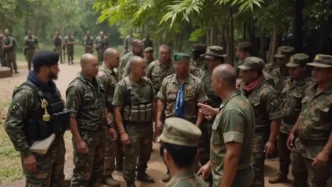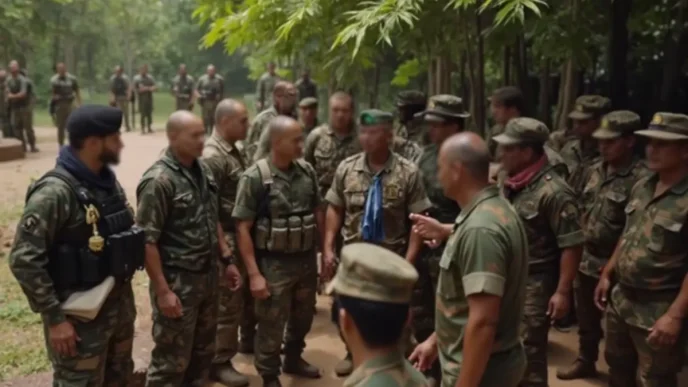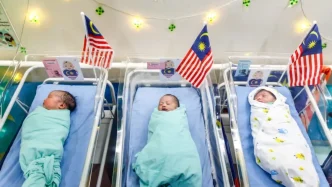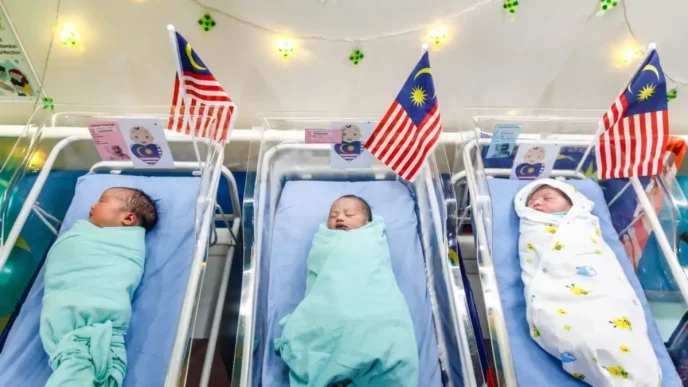Myanmar is facing a deepening humanitarian crisis, with children bearing the brunt of escalating conflict, displacement, and poverty. A staggering 55% of the country’s children live in poverty, while food insecurity and malnutrition have reached alarming levels, according to a recent statement from UNICEF Myanmar. As violence continues to disrupt essential services like health and education, the future of an entire generation hangs in the balance.
The figures are stark. About a third of the millions displaced by four years of conflict are children, torn from their homes and communities. In 2024 alone, 750 children were killed or injured due to the violence, a toll that UNICEF warns is still rising. With public health systems crippled and nearly five million children missing out on education, the risks of exploitation, forced recruitment, and early marriage loom large.
A Perfect Storm of Crises
Myanmar’s children are caught in a vicious cycle of conflict and deprivation. The country’s public health system, already strained by the aftermath of the COVID-19 pandemic, has been further devastated by ongoing violence, insecurity, and a mass exodus of health workers. UNICEF reports that over a million children are missing out on vital vaccinations, placing Myanmar among the countries with the highest number of unvaccinated children globally. This leaves them vulnerable to preventable diseases at a time when access to medical care is scarce.
Education, too, has become a casualty of the crisis. Nearly five million children are out of school, deprived of learning opportunities and exposed to serious dangers. UNICEF highlights the heightened risks of forced recruitment by armed groups, child labour, and exploitation. For many, the absence of education is not just a temporary setback but a permanent barrier to a better future.
Food insecurity compounds these challenges. With 55% of children living in poverty, many displaced families struggle to meet even basic needs. Malnutrition is rampant, particularly among the most vulnerable, such as children with disabilities, whose families can no longer access specialised care due to the collapse of social safety nets. The situation is dire in overcrowded refugee camps, where waterborne diseases and poor living conditions threaten thousands of lives.
Natural disasters have added to the misery. Cyclone Ragi, which struck in 2024, affected over 300,000 children, destroying schools and further straining already fragile communities. UNICEF warns that the impacts of such events are likely to persist into 2025, exacerbating an already catastrophic situation.
A Funding Shortfall with Devastating Consequences
The scale of the crisis demands urgent action, yet funding for humanitarian efforts falls far short of what is needed. UNICEF Myanmar has received only 25% of the $208 million required for 2024, leaving countless children without access to critical assistance. Looking ahead, the agency estimates it will need $286 million in 2025 to provide life-saving and emergency services to 4.1 million of the most vulnerable children and families across the country.
Without this funding, the consequences could be catastrophic. Malnutrition rates are likely to soar, outbreaks of disease could spiral out of control, and access to clean water and education will remain out of reach for millions. “The survival and well-being of children are at serious risk,” UNICEF Myanmar stated, urging the international community to step up support.
The Human Cost of Conflict
Behind the statistics are stories of unimaginable hardship. Children in Myanmar are not only losing their homes but also their childhoods. Displaced families, many of whom have fled violence in regions like Shan, Kachin, and Rakhine, face an uncertain future. A third of those displaced are children, often separated from loved ones and forced to navigate overcrowded camps with little access to food, water, or safety.
The psychological toll is immense. Children who have witnessed violence or lost family members carry trauma that may last a lifetime. Without access to mental health support—itself a rarity in conflict zones—these wounds remain untreated. For children with disabilities, the challenges are even greater, as specialised care and support systems have all but disappeared.
The conflict shows no signs of abating. Myanmar has been gripped by violence for four years, with various armed groups and military forces clashing across the country. The resulting insecurity has disrupted every aspect of life, from healthcare to education to food supply chains. While the international community has condemned the violence, tangible solutions remain elusive, leaving children to pay the highest price.
A Call for Global Solidarity
The crisis in Myanmar is not just a national tragedy but a global concern. The sheer scale of displacement, poverty, and loss demands a coordinated international response. UNICEF’s appeal for $286 million in 2025 is a critical step, but it is only part of the solution. Addressing the root causes of the conflict, ensuring safe access for humanitarian aid, and rebuilding essential services are equally vital.
For now, the focus must be on protecting Myanmar’s most vulnerable—its children. They face a future marked by uncertainty, deprivation, and danger. If the international community fails to act, the consequences will be felt not just today but for generations to come. As UNICEF Myanmar warns, the risks of malnutrition, disease, and lost education are not abstract threats but immediate realities for millions.
Hope is Fragile in This Part of South East Asia
Amid the despair, there are glimmers of hope. Humanitarian organisations continue to work under incredibly difficult conditions to provide food, medical care, and shelter to those in need. Community-led initiatives in some areas have stepped in to fill gaps left by the collapse of formal systems, offering informal education and support to displaced children.
Yet these efforts are no substitute for sustained, well-funded intervention. The international community must prioritise Myanmar’s children, ensuring they are not forgotten amid competing global crises. If reforms to aid delivery or increased funding can be secured, there is a chance to mitigate some of the worst impacts—though such outcomes remain uncertain and unconfirmed at this stage.
Myanmar stands at a crossroads. The choices made now—by governments, donors, and humanitarian actors—will determine whether its children face a future of continued suffering or one of recovery and resilience. For the millions caught in this crisis, time is running out.














